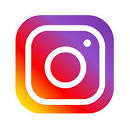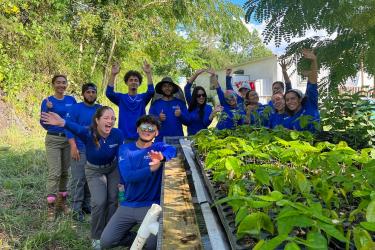
KEY MESSAGE:
NOAA Fisheries announces new modifications to sea turtle release gear for the snapper-grouper fishery in the South Atlantic. These modifications include three newly approved sea turtle release devices, and clarification to regulations to specify exactly which release gear is required and approved for use, including dimensions where appropriate.
WHEN RULE WILL TAKE EFFECT:
- Regulations will be effective January 8, 2020.
SUMMARY OF CHANGES:
- A collapsible hoop net and small turtle hoist are approved as alternatives to the dip net requirement.
- A new squeeze handle dehooker is approved to fulfill the requirement for a short-handled dehooker for external hooks.
- The use of 316L and 304L grade stainless steel for internal and external device construction are approved for other short-handled and long-handled dehookers.
- There is no longer a requirement for the end coverings on canine mouth gags.
- The minimum blade length for the monofilament line cutters is 1 inch with a minimum total length of 6 inches.
- The minimum total length for the long-nose, needle-nose pliers is 11 inches.
- The minimum blade length for the bolt cutters is 4 inches with a minimum total length of 14 inches.
- The specific length for the hank of rope, used as a mouth opener/gag, has been removed.
- The block of hard wood, used as a mouth opener/gag, dimensions must be 10 inch x ¾ inch x ¾ inch.
- The requirement for a sea turtle cushion or support device was updated to specify a dedicated cushion for the turtle must be on board, which cannot be also used as a personal floatation device.
- An electronic version of the document entitled “Careful Release Protocols for Sea Turtle Release with Minimal Injury” kept on an electronic device is now allowed on board a vessel instead of a written copy.
This bulletin serves as a Small Entity Compliance Guide, complying with section 212 of the Small Business Regulatory Enforcement Fairness Act of 1996.
FREQUENTLY ASKED QUESTIONS (FAQs)
What are the sea turtle and smalltooth sawfish release protocols for the South Atlantic snapper-grouper fishery?
- Vessels with commercial and/or for-hire federal snapper-grouper permits are required to have the proper sea turtle release gear in accordance with their vessel freeboard height.
- Vessels also must possess on board a written copy of the most recent version of the document entitled “Careful Release Protocols for Sea Turtle Release with Minimal Injury” (Release Protocols), and the placard for sea turtle handling and release guidelines.
- The Release Protocols must be on board and available for reference inside the wheelhouse, or within a waterproof case if the vessel has no wheelhouse.
- The Placard must be posted at all times inside the wheelhouse, or within an easily viewable area if the vessel has no wheelhouse.
- This rule will allow an electronic copy of the Release Protocols to be on board for reference.
What release gear are currently required for federally permitted vessels in the South Atlantic fishery?
- A federally permitted vessel with a freeboard height equal to four feet or less must have on board a:
- Dip net (handle must be 6 feet or 150% of freeboard height, whichever is greater)
- Dedicated cushioned support device*
- Short-handled dehooker for internal hooks
- Short-handled dehooker for external hooks
- Long-nose or needle-nose pliers
- Bolt cutter
- Monofilament line cutter
- At least two types of mouth openers/mouth gags
- A federally permitted vessel with a freeboard height of greater than four feet must have on board a:
- Long-handled line cutter (handle must be 6 feet or 150% of freeboard height, whichever is greater)
- Long-handled dehooker for internal hooks (handle must be 6 feet or 150% of freeboard height, whichever is greater)
- Long-handled device to pull an “inverted V” (handle must be 6 feet or 150% of freeboard height, whichever is greater)
- Dip net (handle must be 6 feet or 150% of freeboard height, whichever is greater)
- Dedicated cushioned support device*
- Short-handled dehooker for internal hooks
- Short-handled dehooker for external hooks
- Long-nose or needle-nose pliers
- Bolt cutter
- Monofilament line cutter
- At least two types of mouth openers/mouth gags
*A cushioned support device is an auto tire or any other comparable, cushioned, elevated surface that allows boated sea turtles to be immobilized as specified in 50 CFR Part 622 Appendix F. Alternatives to tires include dedicated life rings, seat cushions, life jackets, and life vests; which must be in addition to those required for safety.
What are the new sea turtle and sawfish release devices being added or clarified?
- A sea turtle hoist or a collapsible hoop net will be approved as alternatives to the dip net.
- An additional short-handled dehooker with a squeeze handle will be approved for external hooks.
- Grades of stainless steel for other short-handled and long-handled dehookers for internal and external device construction will be clarified to be 316L and 304L stainless steel.
- The requirement for end coverings for canine mouth gags will be removed.
- The minimum blade length for monofilament line cutters will be clarified to be a minimum of 1 inch.
- The required length for the long-nose, needle-nose pliers will be clarified to be a minimum of 11 inches.
- Other specifications for devices will be similarly clarified.
Why are these devices being added to federal regulations?
- NOAA Fisheries is adding these devices because the Southeast Fisheries Science Center tested and approved these devices as they provide the necessary protection to sea turtles while providing flexibility to fishermen.
- Approved devices must be added to regulations before they can be used by federal permit holders to satisfy the regulatory requirements.
- The changes will provide additional flexibility to meet the requirements for participants in the commercial sector and for-hire component of the snapper-grouper fishery.
How do I measure the freeboard to tell if it is greater or less than four feet?
- Freeboard is defined as the working distance between the top rail of the gunwale to the water's surface, and will vary based on the vessel design.
Where can I find more information on the action?
- Additional information may be found online at the NOAA Fisheries Southeast Regional Office Website at https://www.fisheries.noaa.gov/action/amendment-42-modifications-sea-turtle-release-gear-and-framework-procedure-snapper-grouper.
- By Mail: Frank Helies
NOAA Fisheries, Southeast Regional Office
Sustainable Fisheries Division
263 13th Avenue South
St. Petersburg, Florida 33701-5505
By FAX: (727) 824-5308
By Phone: (727) 824-5305
- More information on sea turtle release protocols may be found online at the NOAA Fisheries Southeast Regional Office Website at: https://www.fisheries.noaa.gov/southeast/endangered-species-conservation/sea-turtle-and-smalltooth-sawfish-release-gear-and.
SIGN UP FOR TEXT MESSAGE ALERTS - FIND OUT ABOUT IMMEDIATE OPENINGS AND CLOSURES
NOAA's Text Message Alert Program allows you to receive important fishery related alerts via text message (SMS). Standard message & data rates may apply. You may opt-out at any time.
Text alerts you may receive include:
- Immediate fishery openings and closures
- Any significant changes to fishing regulations that happen quickly
Sign up for one or more of the following groups:
- Gulf of Mexico Recreational Fisheries Related Alerts
- Text GULFRECFISH to 888777
- Gulf of Mexico Commercial Fisheries Related Alerts
- Text GULFCOMMFISH to 888777
- South Atlantic Recreational Fisheries Related Alerts
- Text SATLRECFISH to 888777
- South Atlantic Commercial Fisheries Related Alerts
- Text SATLCOMMFISH to 888777
- Caribbean Fisheries Related Alerts
- Text CARIBFISH to 888777
 Join us every other Friday on NOAA Fish Instagram for Rec Fish Friday!
Join us every other Friday on NOAA Fish Instagram for Rec Fish Friday!
Other contacts:
Media: Kim Amendola, 727-551-5707
Allison Garrett, 727-551-5750

